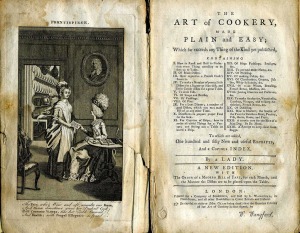Voted the Best Place to See by Condé Nast Traveler.

An individual’s personal library has the potential to reveal significant information about their character, interests, worldview, and education. Such is certainly the case at Drayton Hall, where research has identified what is likely a list of the titles that once graced the bookshelves of John Drayton (c.1715-1779), the builder of Drayton Hall. Written by son Charles Drayton (1743-1820), such a list contains more than 440 titles published before or during John Drayton’s lifetime, indicating his intellectual pursuits and attention to the ideals of the enlightenment.
Not surprising, the list of titles includes nine architectural pattern books that were undoubtedly utilized to construct Drayton Hall. Additional areas of interest include natural history, astronomy, landscape design, horticulture, dance, and even gastronomy. As research continues to investigate the titles of Drayton’s library, we anticipate that an increased understanding will be brought to Drayton, his educational opportunities and academic pursuits.
This month, we are sharing our latest research on John Drayton’s library with a series of posts featuring some of the volumes he would have owned and read.

This listing from Charles Drayton’s journal is likely an inventory of his father John Drayton’s library.
 As this is the time of year to delve into the recipe files for our cherished family recipes, it is fun to note that John Drayton’s library also contained cookbooks. He owned both the 1736 edition of The Modern Cook: Containing Instructions for Preparing and Ordering Public Entertainments for the Tables of Princes by Vincent la Chapelle and the 1774 edition of The Art of Cookery Made Plain and Easy by Hannah Glasse. Ms. Glasse’s cookbook was a favorite among the English and English colonists alike having first been published in 1747 and then reprinted through the early 19th century. The two recipes below come from the 1774 edition and may have made their way onto a dining table in Drayton Hall. The first, A Carolina Rice Pudding, highlights South Carolina’s cash crop of the pre-Revolutionary colony and the second, To Stew a Turkey Brown, may provide a few pointers for your own Thanksgiving turkey this year—you may have been forgetting that all important anchovy! Bon appetite!
As this is the time of year to delve into the recipe files for our cherished family recipes, it is fun to note that John Drayton’s library also contained cookbooks. He owned both the 1736 edition of The Modern Cook: Containing Instructions for Preparing and Ordering Public Entertainments for the Tables of Princes by Vincent la Chapelle and the 1774 edition of The Art of Cookery Made Plain and Easy by Hannah Glasse. Ms. Glasse’s cookbook was a favorite among the English and English colonists alike having first been published in 1747 and then reprinted through the early 19th century. The two recipes below come from the 1774 edition and may have made their way onto a dining table in Drayton Hall. The first, A Carolina Rice Pudding, highlights South Carolina’s cash crop of the pre-Revolutionary colony and the second, To Stew a Turkey Brown, may provide a few pointers for your own Thanksgiving turkey this year—you may have been forgetting that all important anchovy! Bon appetite!
This artifact was recovered from the south flanker well excavation in 1980. It is a very beautiful mid-eighteenth century sweetmeat glass with a honeycomb-molded bowl made from leaded glass. It very likely graced the tables of John Drayton during the last course of a meal when sweetmeats were served in addition to dried fruits and nuts.